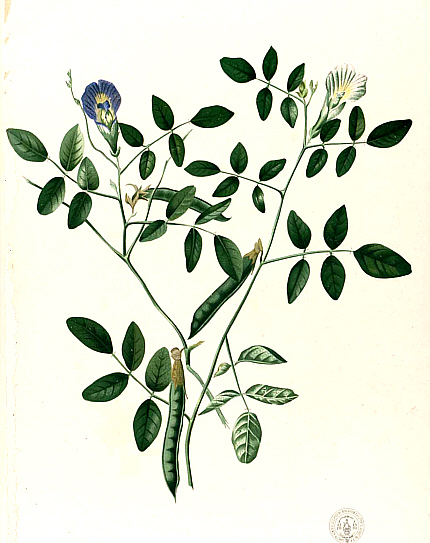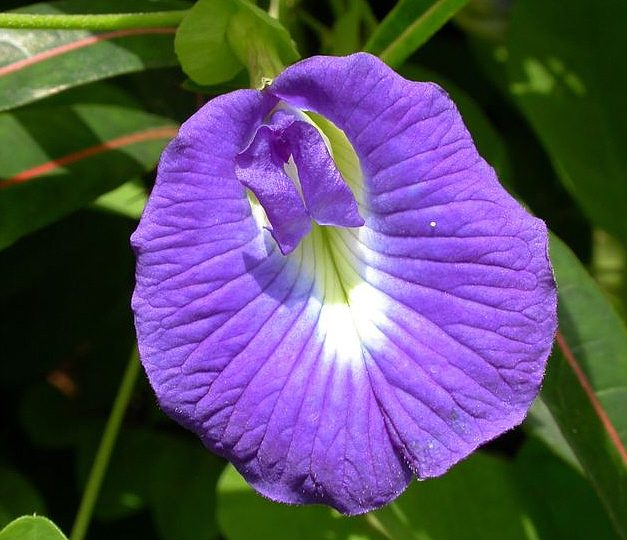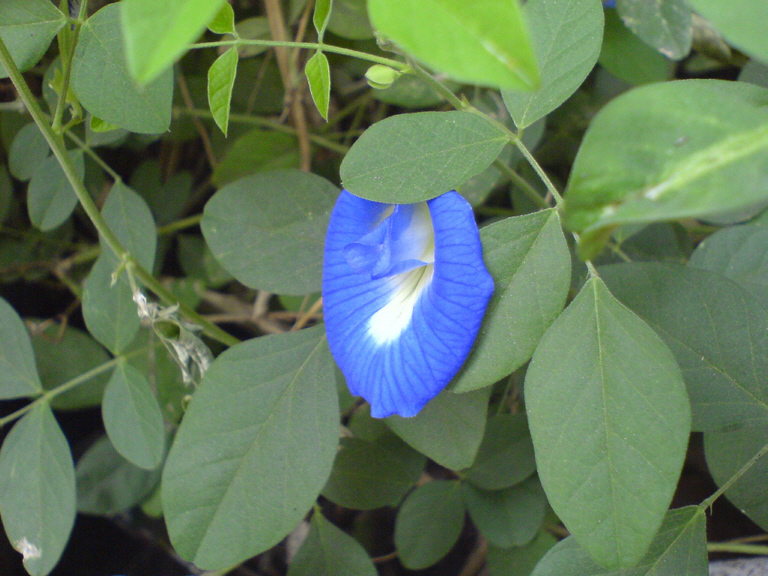

Zitierweise / cite as:
Carakasaṃhitā: Ausgewählte Texte aus der Carakasaṃhitā / übersetzt und erläutert von Alois Payer <1944 - >. -- Anhang A: Pflanzenbeschreibungen. -- Clitoria ternatea L. -- Fassung vom 2007-06-29. -- URL: http://www.payer.de/ayurveda/pflanzen/clitoria_ternatea.htm
Erstmals publiziert: 2007-03-19
Überarbeitungen: 2007-06-29 [Ergänzungen]; 2007-04-20 [Ergänzungen]; 2007-04-18 [Ergänzung]
Anlass: Lehrveranstaltung SS 2007
©opyright: Dieser Text steht der Allgemeinheit zur Verfügung. Eine Verwertung in Publikationen, die über übliche Zitate hinausgeht, bedarf der ausdrücklichen Genehmigung des Verfassers
Dieser Text ist Teil der Abteilung Sanskrit von Tüpfli's Global Village Library
WARNUNG: dies ist der Versuch einer
Übersetzung und Interpretation eines altindischen Textes. Es ist keine
medizinische Anleitung. Vor dem Gebrauch aller hier genannten Heilmittel wird
darum ausdrücklich gewarnt. Nur ein erfahrener, gut ausgebildeter ayurvedischer
Arzt kann Verschreibungen und Behandlungen machen!
Falls Sie die diakritischen Zeichen nicht dargestellt bekommen, installieren Sie eine Schrift mit Diakritika wie z.B. Tahoma.
Verwendete und zitierte Werke siehe: http://www.payer.de/ayurveda/caraka0001.htm

Abb.: Clitoria ternatea L., blaue Varietät
[Bildquelle: Wikipedia]

Abb.: Clitoria ternatea L., blaue Varietät
[Bildquelle: Wikipedia]

Abb.: Clitoria ternatea L., blaue Varietät
[Bildquelle:
dinesh_valke. --
http://www.flickr.com/photos/dinesh_valke/316976205/. -- Zugriff am
2007-06-29. --
![]()
![]()
![]() Creative
Commons Lizenz (Namensnennung, keine kommerzielle Nutzung, keine
Bearbeitung)]
Creative
Commons Lizenz (Namensnennung, keine kommerzielle Nutzung, keine
Bearbeitung)]
Drury:
"Clitorea Ternatea (Linn.) N. 0. Leguminosae. Shlongo Kuspi, Shunkoo-pushpa, Mal. Karka Kartun, Tam. Nulla-ghentana, Tel, Khagin, Hind. Upara-jita, Beng.
Description.—Climbing herbaceous plant; calyx 5-cleft; leaves unequally pinnated; leaflets 2-3 pairs, oval or ovate; stem pubescent, peduncles short, axillary, solitary, 1-flowered; bracteoles large, roundish; flowers resupinate; legumes slightly pubescent, 1-celled, many-seeded; flowers white or blue. Fl. All the year.—W. & A. Prod. i. 205.—Roxb. Fl. Ind. iii 321. —Rheede, viii. t. 38.-------Common in the Peninsula,
Medical Uses.—The powdered seeds are a useful purgative.* The root is used in croup : it sickens and occasions vomiting. It is also given as a laxative to children, and is also diuretic. Of the two varieties, that with the white flowers is said to be the best. Dr O'Shaughnessy states that ho repeatedly tried the root in order to ascertain the truth of its alleged emetic effects, but the results were not satisfactory, and he could not recommend its use.—Roxb. Beng. Disp."
[Quelle: Drury, Heber <1819 - 1872>: The useful plants of India : with notices of their chief value in commerce, medicine, and the arts. -- 2d ed. with additions and corrections. London : Allen, 1873. -- xvi, 512 p. ; 22 cm. -- s.v.]
Dutt:
"CLITOREA TERNATEA, Linn. Sans.
Aparājitā, Viṣṇukrāntā.Vern. Aparājitā, Beng. Aprājit, Hind.
The root of Clitorea ternatea is regarded as laxative and. diuretic, and is generally used in combination with other medicines of the sort in ascites, fever, etc. The following is an example of a prescription containing aparāitā root. Take of the roots of aparājitā, Pladera decussata (sankhini), Baliospermum montanum (danti) and Indigofera tinctoria (nilini), in equal parts, rub them together into an emulsion with water and administer with cow's urine. This preparation is given in ascites and enlargements of the abdominal viscera."
[Quelle: Dutt, Uday Chand: The materia medica of the Hindus / Uday Chand Dutt. With a glossary of Indian plants by George King. -- 2. ed. with additions and alterations / by Binod Lall Sen & Ashutosh Sen. -- Calcutta, 1900. - XVIII, 356 S. -- S. 147.]